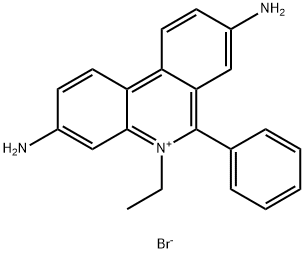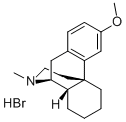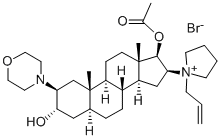3-Bromopropylamine hydrobromide
Synonym(s):3-Aminopropyl bromide hydrobromide
- CAS NO.:5003-71-4
- Empirical Formula: C3H9Br2N
- Molecular Weight: 218.92
- MDL number: MFCD00012912
- EINECS: 225-675-0
- SAFETY DATA SHEET (SDS)
- Update Date: 2024-12-18 13:37:16

What is 3-Bromopropylamine hydrobromide ?
Chemical properties
white to off-white powder or chunks
The Uses of 3-Bromopropylamine hydrobromide
3-Bromopropylamine hydrobromide is used as pharmaceutical raw materials and intermediates. Homotaurine is synthesized from 3-bromopropylamine hydrobromide.
The Uses of 3-Bromopropylamine hydrobromide
3-Bromopropylamine hydrobromide is commonly used as a reagent to introduce propylamine group to the molecular skeleton. Some of the other reported applications include:
- Synthesis of photochemically and thermally reactive azobenzene rotaxane and indolocarbazole-containing [2]rotaxane.
- Synthesis of indenoisoquinoline based active topoisomerase I inhibitors as anticancer agents.
Synthesis
Add the mixture of 3-amino-1-propanol (1ml, 13.3mmol) and 48% HBr (10ml, 40mmol) into the round-bottomed flask and reflux for 15h. Water and HBr were then distilled from the mixture under vacuum. The mixture was further dried under vacuum through a KOH/CaCl column to give 3-Bromopropylamine hydrobromide (2.95 g, 100%) as a brown solid.
Properties of 3-Bromopropylamine hydrobromide
| Melting point: | 171-172 °C(lit.) |
| storage temp. | Inert atmosphere,Room Temperature |
| form | Powder or Chunks |
| color | White to off-white |
| Water Solubility | Soluble in water (50 mg/ml). |
| Sensitive | Hygroscopic |
| BRN | 3906418 |
| InChI | InChI=1S/C3H8BrN.BrH/c4-2-1-3-5;/h1-3,5H2;1H |
| CAS DataBase Reference | 5003-71-4(CAS DataBase Reference) |
| EPA Substance Registry System | 1-Propanamine, 3-bromo-, hydrobromide (5003-71-4) |
Safety information for 3-Bromopropylamine hydrobromide
| Signal word | Warning |
| Pictogram(s) |
 Exclamation Mark Irritant GHS07 |
| GHS Hazard Statements |
H315:Skin corrosion/irritation H319:Serious eye damage/eye irritation H335:Specific target organ toxicity, single exposure;Respiratory tract irritation |
| Precautionary Statement Codes |
P261:Avoid breathing dust/fume/gas/mist/vapours/spray. P264:Wash hands thoroughly after handling. P264:Wash skin thouroughly after handling. P271:Use only outdoors or in a well-ventilated area. P280:Wear protective gloves/protective clothing/eye protection/face protection. P302+P352:IF ON SKIN: wash with plenty of soap and water. P305+P351+P338:IF IN EYES: Rinse cautiously with water for several minutes. Remove contact lenses, if present and easy to do. Continuerinsing. |
Computed Descriptors for 3-Bromopropylamine hydrobromide
| InChIKey | PQIYSSSTRHVOBW-UHFFFAOYSA-N |
| SMILES | C(CBr)CN.Br |
3-Bromopropylamine hydrobromide manufacturer
Sri Neelima Laboratories
1Y
Phone:+91-9849736989
Whatsapp: +91 9849736989
product: 5003-71-4 3-Bromopropylamine hydrobromide 99%
New Products
Tert-butyl bis(2-chloroethyl)carbamate 4-Methylphenylacetic acid N-Boc-D-alaninol N-BOC-D/L-ALANINOL 3-Morpholino-1-(4-nitrophenyl)-5,6-dihydropyridin- 2(1H)-one Furan-2,5-Dicarboxylic Acid Tropic acid DIETHYL AMINOMALONATE HYDROCHLORIDE 1,1’-CARBONYLDIIMIDAZOLE R-2-BENZYLOXY PROPIONIC ACID 1,1’-CARBONYLDI (1,2-4 TRIAZOLE) N-METHYL INDAZOLE-3-CARBOXYLIC ACID (2-Hydroxyphenyl)acetonitrile 4-Bromopyrazole 5-BROMO-2CYANO PYRIDINE 5,6-Dimethoxyindanone 5-broMo-2-chloro-N-cyclopentylpyriMidin-4-aMine 2-(Cyanocyclohexyl)acetic acid 4-methoxy-3,5-dinitropyridine 2-aminopropyl benzoate hydrochloride 1-(4-(aminomethyl)benzyl)urea hydrochloride diethyl 2-(2-((tertbutoxycarbonyl)amino) ethyl)malonate tert-butyl 4- (ureidomethyl)benzylcarbamate Ethyl-2-chloro((4-methoxyphenyl)hydrazono)acetateRelated products of tetrahydrofuran








You may like
-
 5003-71-4 3-Bromopropylamine hydrobromide 99%View Details
5003-71-4 3-Bromopropylamine hydrobromide 99%View Details
5003-71-4 -
 3-Bromopropylamine Hydrobromide CAS 5003-71-4View Details
3-Bromopropylamine Hydrobromide CAS 5003-71-4View Details
5003-71-4 -
 3-Bromopropylamine hydrobromide CAS 5003-71-4View Details
3-Bromopropylamine hydrobromide CAS 5003-71-4View Details
5003-71-4 -
 1975-50-4 98%View Details
1975-50-4 98%View Details
1975-50-4 -
 2-HYDROXY BENZYL ALCOHOL 98%View Details
2-HYDROXY BENZYL ALCOHOL 98%View Details
90-01-7 -
 14714-50-2 (2-Hydroxyphenyl)acetonitrile 98+View Details
14714-50-2 (2-Hydroxyphenyl)acetonitrile 98+View Details
14714-50-2 -
 118753-70-1 98+View Details
118753-70-1 98+View Details
118753-70-1 -
 733039-20-8 5-broMo-2-chloro-N-cyclopentylpyriMidin-4-aMine 98+View Details
733039-20-8 5-broMo-2-chloro-N-cyclopentylpyriMidin-4-aMine 98+View Details
733039-20-8
Statement: All products displayed on this website are only used for non medical purposes such as industrial applications or scientific research, and cannot be used for clinical diagnosis or treatment of humans or animals. They are not medicinal or edible.